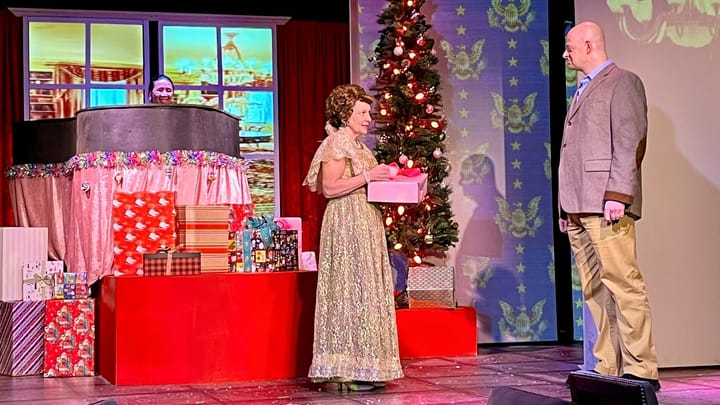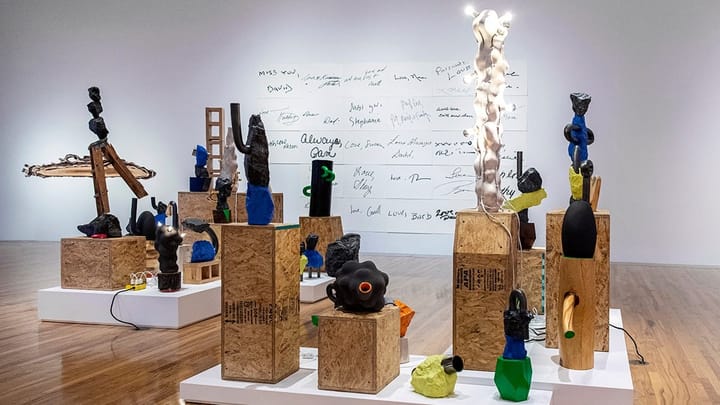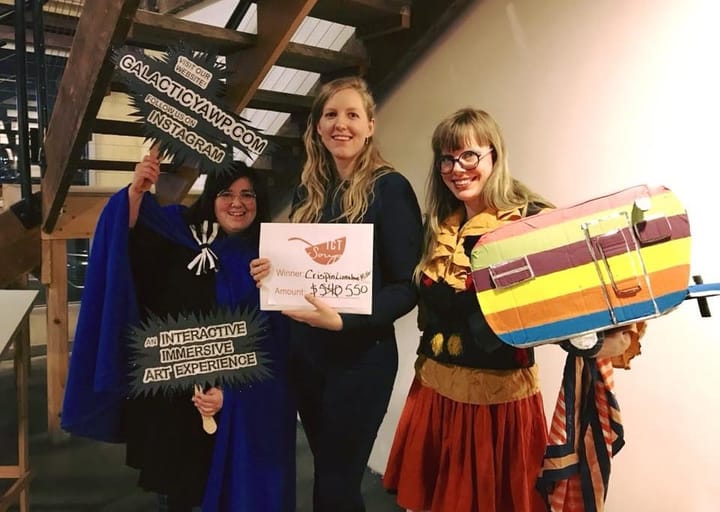From cryptic & clever to poignant & even sublime: Karen Reimer at Bethel College
“Made for you by a professional seamstress,” an exhibition of fiber works, is on view through October 27.
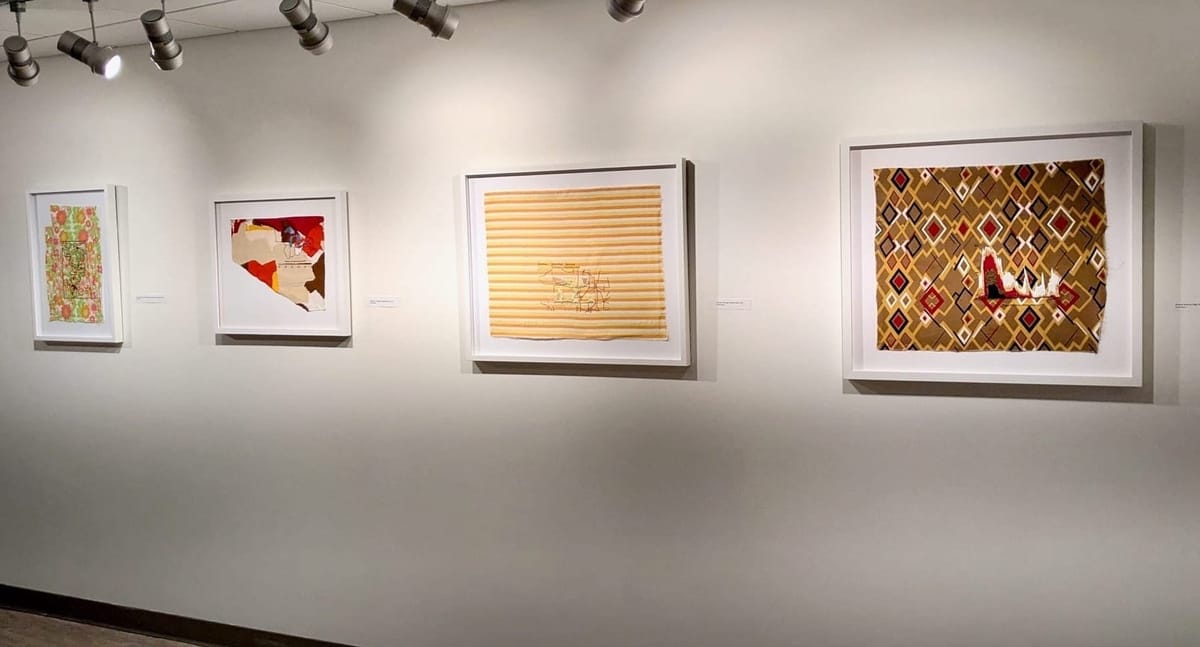
Patterns — we all have them. Arguably, individual and cultural patterns of thought and behavior are the clearest evidence anyone has for a coherent “self” and “culture.” Patterns are also how we make sense of the world — they pop up everywhere, from the cycles we use to measure time to data arranged into statistical patterns meant to help us understand what’s happening around us. And then there are the patterns on our clothes, furniture, dishes, wallpaper, etc. Inessential to the function of everyday objects, they are, nevertheless, ubiquitous and laden with meaning.
The artist Karen Reimer is fascinated by patterns and the many ideas that word evokes. One can see her explorations of pattern in her current exhibition, “Made for you by a professional seamstress,” on view at the Regier Art Gallery at the Luyken Fine Arts Center at the artist’s undergraduate alma mater, Bethel College in North Newton, Kansas.
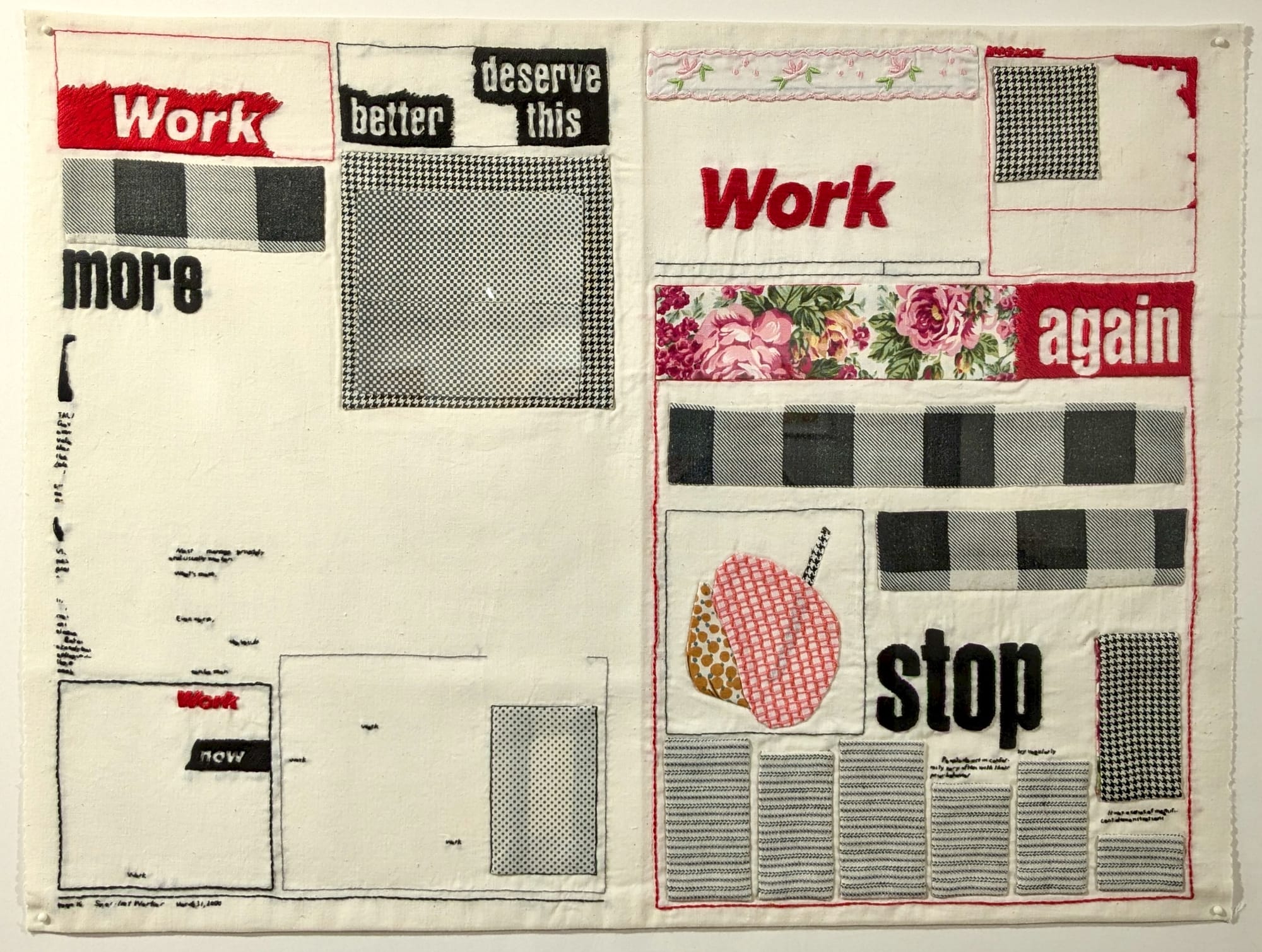
The origins of Reimer’s work lie at the intersection of two key developments in American art of the 1970s: Conceptualism, which sought to make visible the invisible patterns of all kinds of thought and behavior; and feminist art, which sought to make women’s lives and work, including the traditionally feminine skills of working with fabrics and fiber, more culturally visible and appreciated.
What Reimer achieves with these influences is an important contribution to “critical craft” — a way of working that mines the experimental and subversive potential of techniques that were historically undervalued because they were common and utilitarian skills possessed by women like Reimer’s Mennonite mother, who taught her how to quilt and sew. Now that these skills are largely unnecessary and uncommon, utilizing them is a creative choice.
In Reimer’s work, all these ideas come together in ways that range from cryptic and clever to poignant and even sublime. In the earliest works in the show, she hand-embroidered found texts, playing with legibility and illegibility of its translation from print into stitching. When Reimer and I talked, we connected over our shared fascination with cognitive biases and such phenomena as pareidolia and apophenia/patternicity, which make the human brain look for recognizable images and meaning everywhere.
In the “Boundary Troubles” series, different fabric patterns at once clash and bleed into each other, a perpetually relevant metaphor for the arbitrariness and permeability of all kinds of boundaries and borders humans imagine and try to enforce.
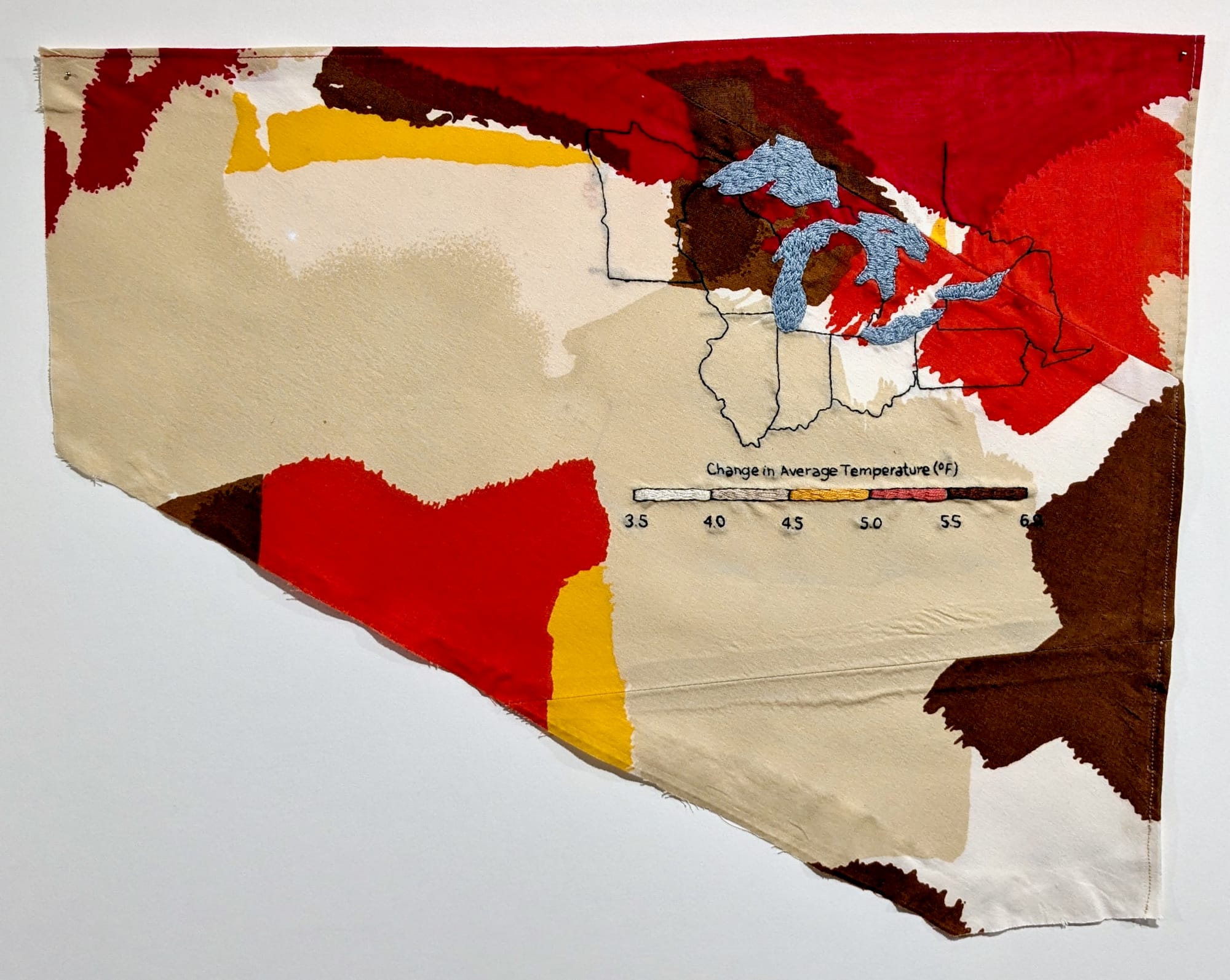
The series that resonated with me most strongly is “Sea Change,” an expression of the artist’s climate grief wherein Reimer embroiders real data visualizations of aspects of human-made climate change — including the all too close to home rapid shrinking of Great Plains aquifers — atop highly patterned pieces of fabric. The resulting visual clashes and echoes make one more aware of both the disturbing data and the way we take nature, that most common referent of fabric design, for granted as a cheerful background to human passions rather than a living world that our species is actively damaging and destroying.
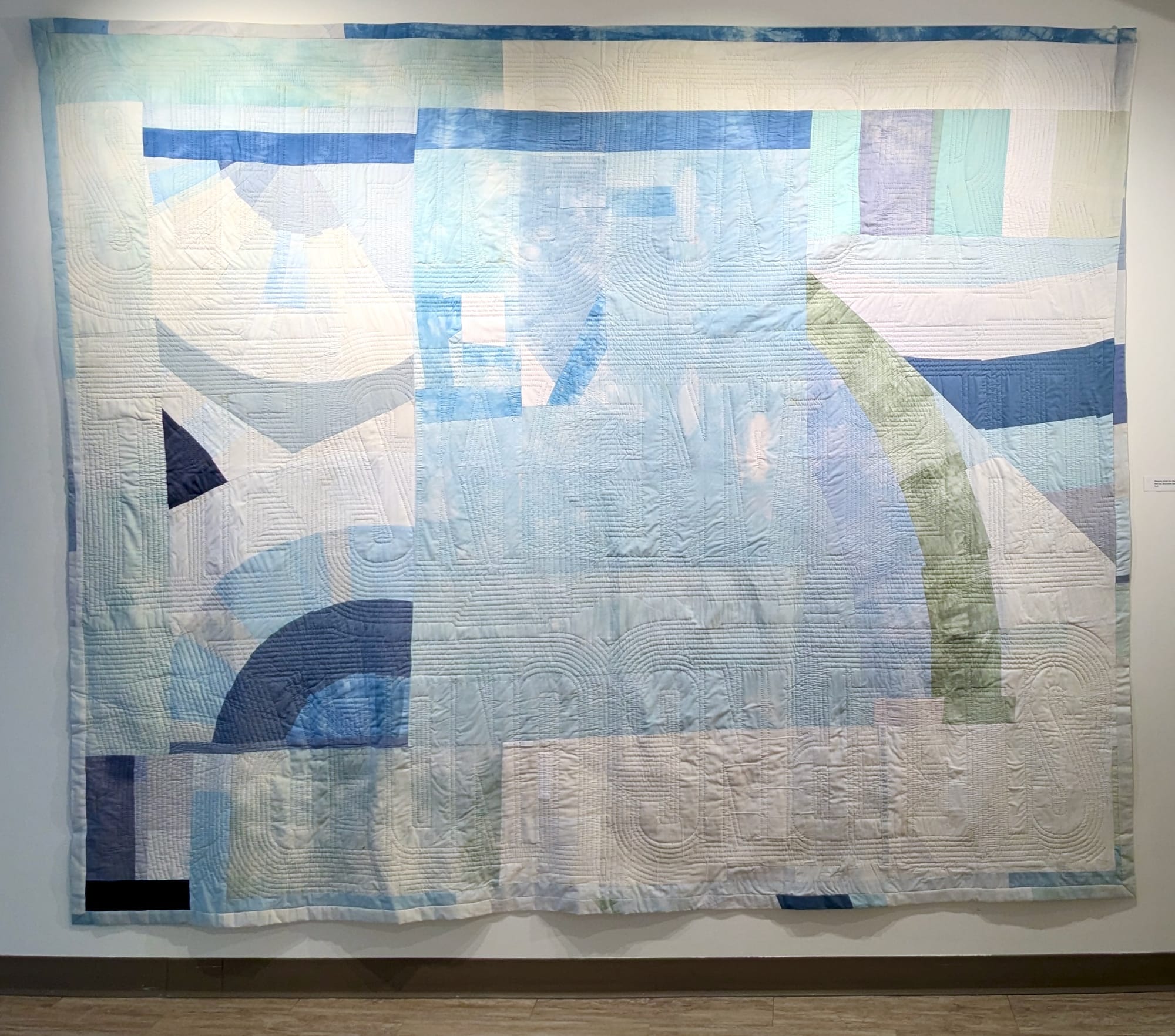
The most sublime works in the show are Reimer’s quilts, which play on the visual similarities between sky and lake — another boundary-blurring both/and rooted in Reimer’s biography as a native Kansan who has lived for decades in Chicago.
The exhibition is on view through October 27.
— Ksenya Gurshtein is a Wichita based writer and independent curator.
This review was originally published in our newsletter. Sign up for weekly emails and stay informed about Kansas art and culture.
Support Kansas arts writing
The SHOUT is a Wichita-based independent newsroom focused on artists living and working in Kansas. We're partly supported by the generosity of our readers, and every dollar we receive goes directly into the pocket of a contributing writer, editor, or photographer. Click here to support our work with a tax-deductible donation.


